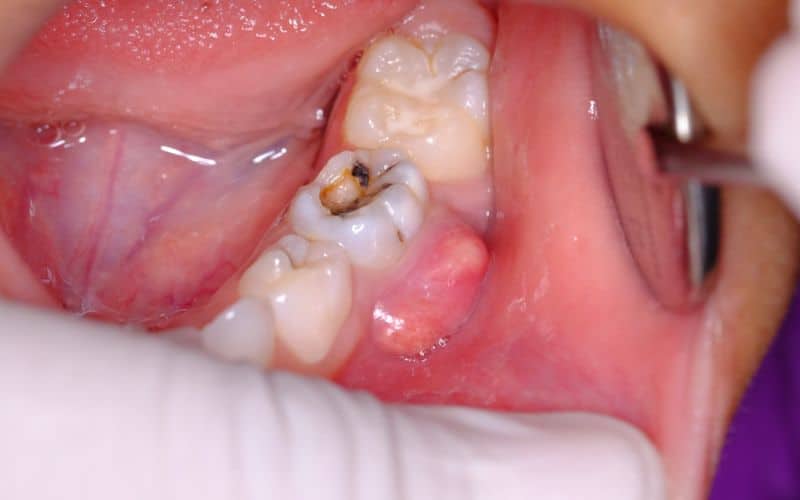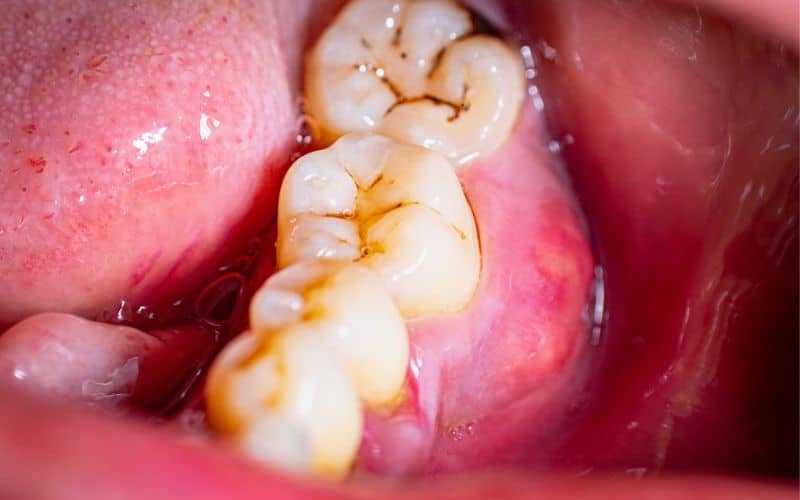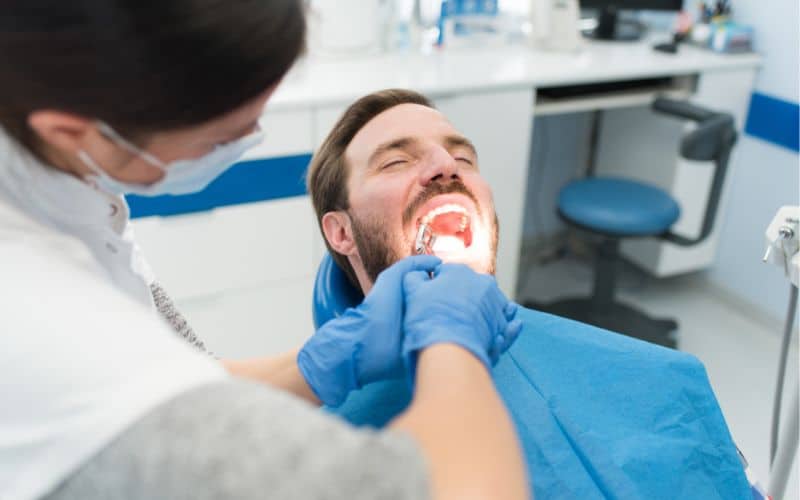Many people believe that infected or abscessed teeth are better not extracted until the infection subsides. However, this isn’t always the case.
Infections can spread to other parts of the jaw and throat, causing life-threatening problems. Dentists generally prefer to drain the infection and treat it with antibiotics before deciding on extraction.
1. The Tooth Is Too Swollen
Tooth infection encourages bacteria in the mouth to enter the pulp inside the tooth and damage it. Often, the dentist can correct this problem with root canal therapy. However, if the damage is too extensive or the infection too severe to treat with RCT, the dentist may have no choice but to remove the affected tooth or teeth.
Infected teeth can cause pain, swelling, and even lead to the formation of dental abscesses or bone loss. If left untreated, a tooth infection can also spread to other parts of the mouth, jaw, or neck, making it difficult or impossible for patients to function normally. Infections in the jaw or head can also compromise the immune system and create a serious illness, such as sepsis, which can even be fatal.
Fortunately, the dentist can help patients avoid infections and tooth decay by encouraging them to practice good oral hygiene habits. This includes brushing their teeth twice a day, flossing once a day, and having regular dental cleanings. These routine preventive visits will also allow patients to catch any problems before they worsen. When a patient does experience discomfort or an infection, the dentist can prescribe medications, such as antibiotics or acetaminophen and ibuprofen. They can also recommend a visit to an oral surgeon for more severe cases of tooth infection or damage.
2. The Tooth Is Too Infected

A tooth infection is a dangerous situation that requires swift dental care. Infections can lead to severe complications, such as a bone loss or gum deterioration. To prevent an infection, it’s best to visit your dentist as soon as you notice any symptoms, including extreme pain, swelling, or pus and discharge.
Usually, a tooth becomes infected when bacteria get inside through a crack or chip and cause decay. As the bacterial growth progresses, it reaches the inner part of the tooth called the pulp. If left untreated, a dental abscess may form. It’s also possible the bacteria can spread to other parts of your mouth and jaw area.
To treat an infected tooth, your dentist can perform a root canal treatment, drain the abscess, or remove it altogether. In some cases, they might prescribe antibiotics before or after the treatment.
Some people are concerned that removing an infected tooth will increase their chances of developing a secondary infection or even sepsis. However, this is a misconception. A study by Martis (1975) evaluated 1,376 teeth that were extracted due to an infection. Out of this number, 327 (almost one-fourth) had associated secondary “fascial space abscesses.” Thus, the extraction process does not pose a significant risk for the spread of infection. If the infection is controlled and treated early, a tooth extraction won’t cause any major problems.
3. The Tooth Is Too Sensitive

Tooth sensitivity is often an early warning sign of a more serious dental problem. It can be caused by everything from excessive or aggressive brushing (toothbrush abrasion), to the early stages of gum disease or even a chipped or cracked tooth. It can also be triggered by hot or cold temperatures, or chemicals such as sugar and certain teeth-whitening products. Regardless of the cause, it is important to address sensitivity as soon as it happens to ensure you do not face painful or long-lasting effects.
Dentists can often successfully treat sensitive teeth with a combination of at-home oral care, lifestyle changes and in-office treatments. However, sometimes it is necessary to remove the offending tooth altogether. This is because if the underlying issue is left untreated, it can spread to other parts of the mouth or jaw bone, resulting in complications that may not respond to antibiotic treatment.
In this case, the dentist will likely advise draining a dental abscess and prescribe antibiotics to control the infection before proceeding with any extractions. This is because the local anesthesia won’t work as well on infected teeth and can lead to pain and swelling after the procedure. Then, when the infection has been brought under control, dentists will typically be able to extract the offending tooth and provide a smooth and predictable resolution to the patient’s dental issue.
4. The Tooth Is Too Bulky

There are times when removing an infected tooth is a better option than trying to save it. This is especially true if a periapical abscess has occurred. This is an infection that affects both the bone and gum tissue of a tooth. Your dentist may try to treat it by making an incision and draining the abscess or they might recommend a root canal. Both of these treatments are designed to eliminate the infection and seal the area against bacteria.
However, if the damage to the pulp is too severe or the infection is untreatable, your dentist might need to pull the tooth. This procedure removes the diseased central tissue (pulp) and then cleans and fills the space to prevent future infections. It’s a common dental treatment and, if you take care of your teeth afterward, they can last a lifetime.
Your dentist is always trying to avoid pulling a tooth, but sometimes it’s just the best option for your oral health. The most important thing is to maintain good oral hygiene by brushing twice a day and flossing at least once a day. You should also visit your dentist for up-to-date x-rays and regular cleanings. Also, make sure to not use your teeth to open packages or break string because this can cause them to crack, chip or fracture.


